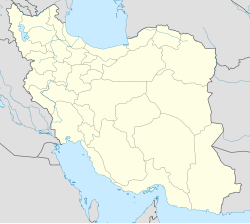파라나와 에텐데카 함정
Paraná and Etendeka traps| 파라나와 에텐데카 함정 | |
|---|---|
| 파라나·에텐데카 고원 또는 파라나·에텐데카 주 | |
 파라나와 에텐데카 함정은 남아메리카의 지질학 지도에 짙은 자주색 점으로 표시된다. | |
| 위치 | 브라질 동부, 우루과이, 북서 나미비아 & 남서 앙골라 |
| 의 일부 | 파라나 분지 |
| 연안 수역 | 남대서양 |
| 면적 | 1,500,000km2(580,000 sq mi) |
| 형성자 | 판게아의 해체 |
| 지질학 | 세라 게랄 포메이션 |
| 나이 | 백악기 초기 마로138번길 |
| 라스트 분화 | 바르레미안 |
The Paraná-Etendeka traps (or Paraná and Etendeka Plateau; or Paraná and Etendeka Province) comprise a large igneous province that includes both the main Paraná traps (in Paraná Basin, a South American geological basin) as well as the smaller severed portions of the flood basalts at the Etendeka traps (in northwest Namibia and southwest Angola).원래 현무암 흐름은 1억 3천 8백만 년에서 1억 2천 8백만 년 전에 발생했다.이 지방은 150만 평방 킬로미터(580,000 평방 미)의 유역 후 면적이 있었고, 원래 부피는 2.3 x 106 km 킬로미터를 초과할 것으로 예측되었다.[1][2]
지리역학
파라나와 에텐데카의 현무암 표본은 백악기 초기 발랑기니아기 동안 약 132 Ma의 나이를 가지고 있다.[3]간접적으로 보면, 이 탈취와 증축은 아마도 파라나, 에텐데카 함정의 기원이며, 월비스 리지(고프/트리스탄 핫스팟)에 의해 연결되어 있기 때문에 고프, 트리스탄 다쿤하 제도의 기원이 될 수도 있다.파라나 쪽에서[4][5] 동쪽으로 향하는 리오 그란데 라이즈(25°S~35°S) 해군은 이 트랩 시스템의 일부다.[6]
설명
동위원소를 포함한 지구화학에 대한 해석은 지질학자들이 덫과 관련된 화성암을 형성하는 마그마스가 지구의 암석권 밑바닥에 맨틀 플룸이 도달했기 때문에 아스테인산 맨틀이 녹으면서 생겨났다고 결론을 내리게 했다.그리고 나서 마그마의 많은 부분이 폭발하기 전에 지각 물질로 오염되었다.덫과 관련된 일부 금석암은 맨틀에 있는 마그마의 근원을 더 직접적으로 반영하는 지각 오염을 피했다.[7]
폭발적 화산 활동을 나타내는 덫의 일부에서 이그넴브라이트라고 불리는 바위가 발견된다.파라나 트랩은 아마도 지구 역사상 알려진 가장 큰 폭발성 화산 폭발의 현장을 포함하고 있을 것이다.[8]
참고 항목
참조
- ^ Courtillot, Vincent E.; Renneb, Paul R. (January 2003). "Sur l'âge des trapps basaltiques (On the ages of flood basalt events)". Comptes Rendus Geoscience. 335 (1): 113–140. Bibcode:2003CRGeo.335..113C. CiteSeerX 10.1.1.461.3338. doi:10.1016/S1631-0713(03)00006-3.
- ^ Fodor, R.V.; McKee, E.H.; Roisenberg, A. (1989). "Age distribution of Serra Geral (Paraná) flood basalts, southern Brazil". Journal of South American Earth Sciences. 2 (4): 343–349. Bibcode:1989JSAES...2..343F. doi:10.1016/0895-9811(89)90012-6.
- ^ Stewart, Kathy; Turner, Simon; Kelley, Simon; Hawkesworth, Chris; Kirstein, Linda; Mantovani, Marta (1996). "3-D, 40Ar-39Ar geochronology in the Paraná continental flood basalt province". Earth and Planetary Science Letters. 143 (1–4): 95–109. Bibcode:1996E&PSL.143...95S. doi:10.1016/0012-821X(96)00132-X.
- ^ O'Neill, C.; Müller, R. D.; Steinberger, B. (2003). "Revised Indian plate rotations based on the motion of Indian Ocean hotspots" (PDF). Earth and Planetary Science Letters. 215 (1–2): 151–168. Bibcode:2003E&PSL.215..151O. CiteSeerX 10.1.1.716.4910. doi:10.1016/S0012-821X(03)00368-6. Archived from the original (PDF) on 2011-07-26.
- ^ O'Connor, J. M.; le Roex, A. P. (1992). "South Atlantic hot spot-plume systems. 1: Distribution of volcanism in time and space". Earth and Planetary Science Letters. 113 (3): 343–364. Bibcode:1992E&PSL.113..343O. doi:10.1016/0012-821X(92)90138-L.
- ^ 브라질 '아틀란티스' 발견 - 지질학자들은 리오에서 약 900마일 떨어진 '브라질 아틀란티스'로 불린 것을 발견했다고 발표했다. 도나 보우터, 데일리 텔레그래프, 2013년 5월 7일
- ^ Owen-Smith, T.M.; Ashwal, L.D.; Sudo, M.; Trumbull, R.B. (2017). "Age and Petrogenesis of the Doros Complex, Namibia, and Implications for Early Plume-derived Melts in the Paraná–Etendeka LIP". Journal of Petrology. 58 (3): 423–442. Bibcode:2017JPet...58..423O. doi:10.1093/petrology/egx021.
- ^ Scott E. Bryan; Ingrid Ukstins Peate; David W. Peate; Stephen Self; Dougal A. Jerram; Michael R. Mawby; J.S. Marsh; Jodie A. Miller (2010). "The largest volcanic eruptions on Earth" (PDF). Earth-Science Reviews. 102 (3–4): 207–229. Bibcode:2010ESRv..102..207B. doi:10.1016/j.earscirev.2010.07.001.
추가 읽기
- Peate DW (1997). "The Parana-Etendeka Province" (PDF). In Mahoney JJ, Coffin MF (eds.). Large Igneous Provinces: continental, oceanic, and planetary flood volcanism. Geophysical Monograph. Vol. 100. Washington, DC: American Geophysical Union. pp. 217–245.
외부 링크
- "EMAGE: East Antarctic Margin Aeromagnetic and Gravity Experiment". Alfred Wegener Institute for Polar and Marine Research. Archived from the original on 2011-11-02.



